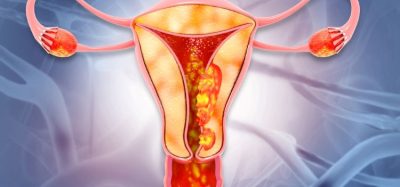Pradaxa® (dabigatran etexilate, 150mg bid) shows significant reduction in the risk of stroke
Posted: 28 August 2011 | European Pharmaceutical Review | No comments yet
New data from two RE-LY® trial subgroup analyses show that dabigatran etexilate 150mg bid consistently reduces the risk of stroke in atrial fibrillation (AF) compared to well-controlled warfarin, irrespective of whether patients use antiplatelet [1] or other concomitant therapies, such as the anti-arrhythmics amiodarone or verapamil. [2] The relative benefits of dabigatran etexilate over well-controlled warfarin in the overall results of RE-LY® [3,4] were consistent across patients using these concomitant treatments . [1,2] The data was presented at the European Society of Cardiology (ESC) Congress 2011, in Paris, France.
Dabigatran etexilate 150mg bid is the only novel oral anticoagulant approved for stroke prevention in AF shown superior to well-controlled warfarin (median TTR 67% [5,6]) in an intention to treat analysis. [3,4] These groundbreaking results were demonstrated in RE-LY®, a PROBE trial (prospective, randomized, open-label with blinded endpoint evaluation), comparing two fixed doses of the oral direct thrombin inhibitor dabigatran etexilate (110mg and 150mg bid) each administered in a blinded manner, with open label warfarin. [3,7]
The new findings are significant because the long time standard of care warfarin is known to interact with numerous medications, including many common co-medications metabolised via the Cytochtrome P450 pathway. In addition, approximately one in five patients with AF are being prescribed antiplatelet therapy alongside warfarin for conditions such as coronary artery disease, acute coronary syndrome, or recent coronary artery stenting. [8] The safety of antiplatelet therapy in combination with anticoagulants has been a physician concern, with the combination shown to increase major bleeding over the use of anticoagulation alone. [8]
The present antiplatelet analysis assessed the combined use of aspirin and/ or clopidogrel in 8,507 patients taking either dabigatran etexilate (150mg bid or 110mg bid) or well-controlled warfarin. [1] The second analysis evaluated interactions with dabigatran etexilate and the use of P-glycoprotein inhibitors such as amiodarone, verapamil and diltiazem. [2] Results showed:
- As seen in the overall RE-LY® trial, dabigatran etexilate 150mg bid maintained its efficacy benefits over well-controlled warfarin for the prevention of stroke and systemic embolism (SEE) in AF patients using antiplatelet therapy (HR=0.76, 95% CI=0.58-0.99), with similar rates of major bleeding events compared to warfarin (HR=0.94; 95% CI=0.79-1.12) and non-significant p-values for interaction indicating consistency of this sub-group compared to the overall RE-LY® trial [1]
- Dabigatran etexilate 110mg bid remained as effective as well-controlled warfarin in preventing stroke/SEE in patients in AF using antiplatelet therapy (HR=0.93, 95%CI=0.72-1.20, p-value for interaction = ns), with reduction in major bleeding events (HR=0.84, 95% CI=0.70-1.00, p-value for interaction = ns) [1]
- Concomitant antiplatelet use increased the risk of major bleeding (HR=1.60, 95% CI=1.41-1.81) in all treatment arms, with no difference between patients treated with dabigatran etexilate or warfarin [1]
- Use of P-glycoprotein inhibitors*, such as amiodarone, verapamil and diltiazem, in combination with dabigatran etexilate did not alter the overall benefits of dabigatran etexilate for stroke prevention, major bleeding or intracranial hemorrhage relative to well-controlled warfarin. [2]
Prof. Antonio Dans, Department of Medicine, University of the Philippines College of Medicine said, “Even though combining antiplatelets with an anticoagulant bears the risk of increased bleeding, it is often required in AF patients with coronary artery disease. The new results are thus an important finding for clinical practice, because they show that the benefits of dabigatran etexilate over warfarin for the prevention of stroke in AF remain unchanged when patients use concomitant antiplatelet therapy.”
Dabigatran etexilate was recently approved for stroke prevention in AF in the EU following previous approvals in the US, Canada, Japan, Australia and many other countries across five continents. [6,9-12]
References
- Dans A, et al. Concomitant use of antiplatelet therapy with dabigatran or warfarin in the Randomized Evaluation of Long-term Anticoagulation Therapy (RE-LY®) trial. Presented at the European Society of Cardiology Congress 2011, 28th August 2011.
- Reilly P, et al. Concomitant use of P-glycoprotein inhibitors with dabigatran or warfarin in the Randomized Evaluation of Long-term anticoagulation therapY (RE-LY) trial. Presented at the European Society of Cardiology Congress 2011, 28th August 2011.
- Connolly SJ, et al. Dabigatran versus Warfarin in Patients with Atrial Fibrillation. N Engl J Med 2009; 361:1139-51.
- Connolly SJ, Ezekowitz MD, Yusuf S, Reilly PA, Wallentin L: Newly identified events in the RE-LY® trial. N Engl J Med 2010; 363(19): 1875-1876.
- FDA Advisory Committee Briefing Document, September 2010, http://www.fda.gov/downloads/AdvisoryCommittees/CommitteesMeetingMaterials/Drugs/CardiovascularandRenalDrugsAdvisory Committee/UCM226009.pdf.
- Pradaxa®, Summary of Product Characteristics, August 2011. Europe.
- Ezekowitz MD, et al. Rationale and Design of RE-LY®: Randomized Evaluation of Long-Term Anticoagulation Therapy, Warfarin, Compared with Dabigatran. American Heart Journal 2009; 157:805-810.
- Shireman TI, et al. Combined anticoagulant–antiplatelet use and major bleeding events in elderly atrial fibrillation patients. Stroke 2004 35:2362-2367.
- U.S. Food and Drug Administration – Pradaxa® Prescribing Information.Oct 19th, 2010.
- Health Canada – PRADAX™ Product Monograph. Oct 26th, 2010.
- Prazaxa® product information, January 2011, Japan.
- Pradaxa®, Australian Product information, approved April 29th, 2011.
- Stewart S, Murphy N, Walker A, et al. Cost of an emerging epidemic: an economic analysis of atrial fibrillation in the UK. Heart 2004; 90:286-92.
- Lloyd-Jones DM, Wang TJ, Leip EP, et al. Lifetime risk for development of atrial fibrillation: the Framingham Heart Study. Circulation 2004; 110:1042-6.
- Fuster V, Rydn LE, Cannom DS, et al. ACC/AHA/ESC 2006 Guidelines for the Management of Patients with Atrial Fibrillation – executive summary. Circulation 2006; 114:700-52.
- Kannel WB, et al. Final Draft Status of the Epidemiology of Atrial Fibrillation. Med Clin North Am. 2008; 92(1): 17–40.
- Atlas of Heart Disease and Stroke, World Health Organization, September 2004. Viewed Dec 2010 at www.who.int/cardiovascular_diseases/en/cvd_atlas_15_burden_stroke.pdf .
- Wolf PA, Abbott RD, Kannel WB. Atrial fibrillation as an independent risk factor for stroke: the Framingham Study. Stroke 1991: 22(8);983-8.
- Marini C, De Santis F, Sacco S, et al. Contribution of atrial fibrillation to incidence and outcome of ischaemic stroke: results from a population-based study. Stroke 2005; 36:1115-9.
- Lin HJ, Wolf PA, Kelly-Hayes M, et al. Stroke severity in atrial fibrillation: the Framingham study. Stroke 1996; 27:1760-4.
- Hart RG, Pearce LA, Aguilar MI, et al. Meta-Analysis: antithrombotic therapy to prevent stroke in patients who have non-valvular atrial fibrillation. Ann Intern Med 2007; 146:857-67.
- Bruggenjurgen B et al. The Impact of Atrial Fibrillation on the Cost of Stroke: The Berlin Acute Stroke Study. Value Health 2007; 10: 137–43.
- Di Nisio M, et al. Direct Thrombin Inhibitors. N Engl J Med 2005; 353:1028-40.
*P-glycoprotein inhibitors work to inhibit the P-glycoprotein transporter which is a membrane-associated protein that transports various substrates across cell membranes of the body, thereby affecting the bioavailability of drugs








